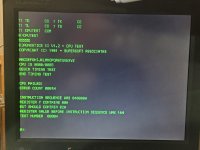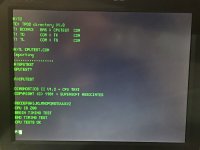cjs
Experienced Member
I'm working on a CPU simulator for the Intel 8080 (and probably, soon enough, 8085) and I'm running into some issues with a test program that I'm using.
I'm wondering if someone out there who has a machine with an actual Intel 8080 CPU could run the Supersoft CPU Diagnostics program (the CP/M program CPUTEST.COM in that directory) and let me know what output you get from it. I'd also be interested in seeing the output from a run on an 8085.
Note that it's unchanged from the various other copies of this program that are floating about out there (such as those mentioned here), so you can compare the binary with those copies if you're worried about what it might do.
I'm wondering if someone out there who has a machine with an actual Intel 8080 CPU could run the Supersoft CPU Diagnostics program (the CP/M program CPUTEST.COM in that directory) and let me know what output you get from it. I'd also be interested in seeing the output from a run on an 8085.
Note that it's unchanged from the various other copies of this program that are floating about out there (such as those mentioned here), so you can compare the binary with those copies if you're worried about what it might do.




